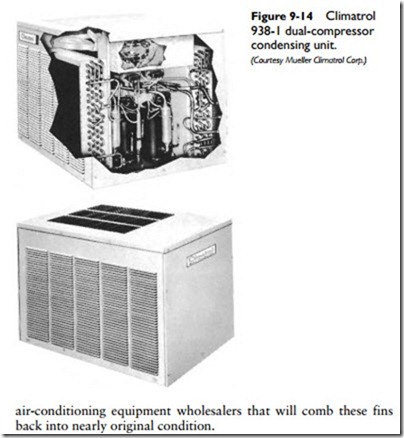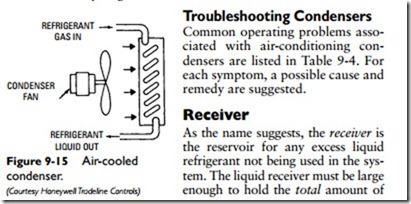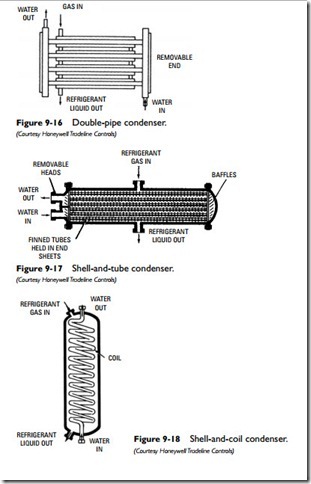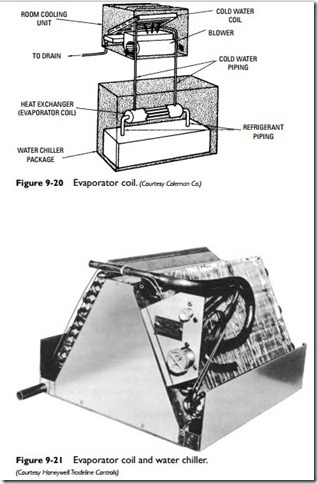Condenser Service and Maintenance
The aluminum fins on condenser coils are easily bent and can block airflow through the coil. A tool called a fin comb is available at
refrigerant used in the system. Receivers are commonly constructed of drawn steel shells welded together to form a single unit.
Evaporator
An evaporator is a device used in either mechanical- or absorption- type refrigeration systems to transfer or absorb heat from the air surrounding the evaporator to the refrigerant. In so doing, the liquid refrigerant is evaporated or boiled off as it passes through the evaporator.
Evaporators are made of copper tubing with or without closely spaced aluminum fins designed to increase the heat transfer surface. Because of its function (that is, removing heat from room air) and construction, an evaporator is also referred to as an evaporator coil, cooling coil, blower coil, or direct-expansion coil.
Figure 9-20 illustrates a typical evaporator coil used in the bon- net or plenum of a warm-air furnace. The coil capacity must be matched to the condensing unit for efficient cooling. This is particularly important to remember when converting an existing heating system to year-round air-conditioning.
An evaporator coil may also be placed in the heat exchanger of a water chiller as shown in Figure 9-21. The water cooled in the water chiller is piped to the cold-water coil over which the room air is circulated. The coil may be duct mounted (in a warm-air heating system) or located in a room cooling unit (in a forced hot-water heating system).




